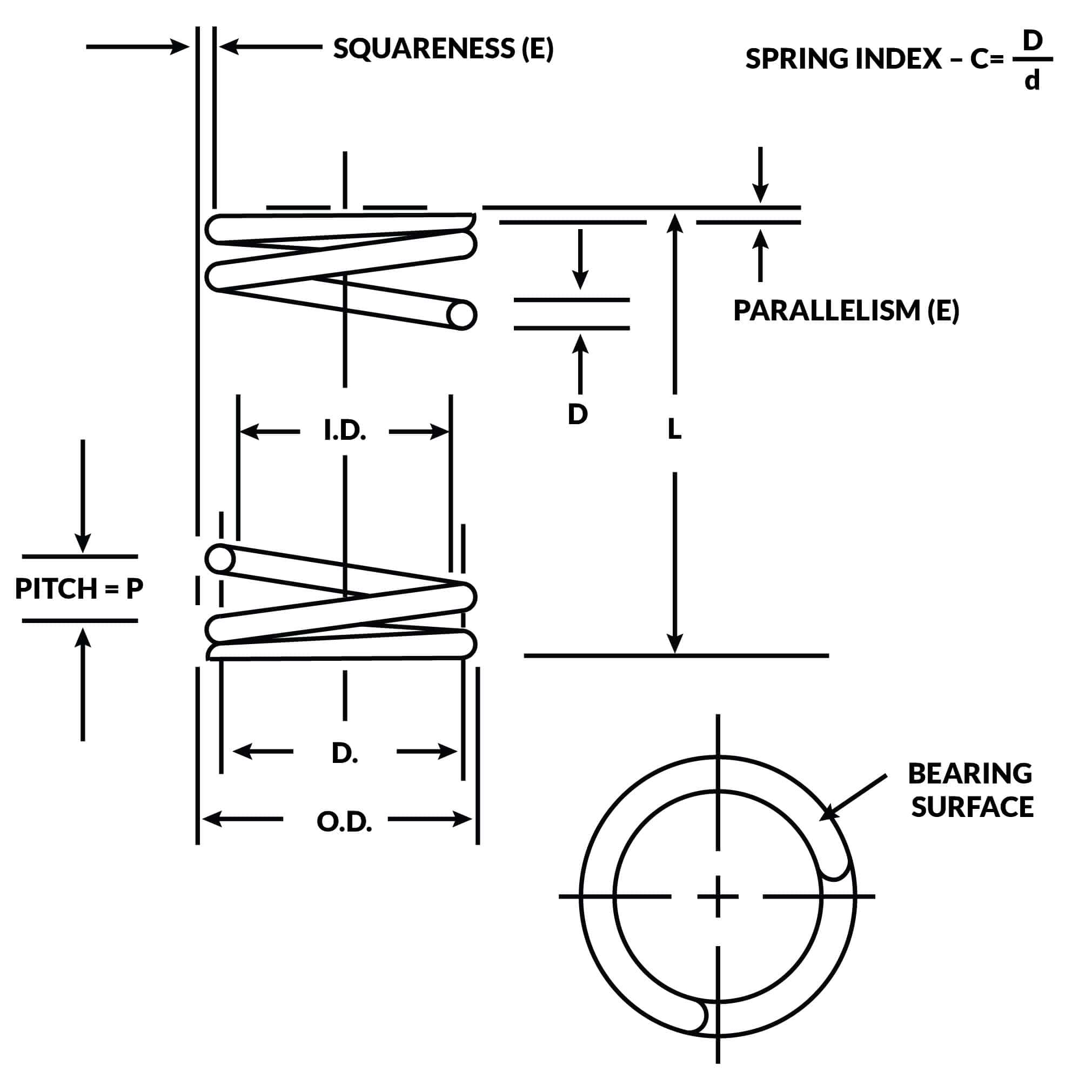Get unique, complex parts easily. No matter your requirements, Chaoyi Spring creates hard-to-produce coil springs and wire forms.
Let us help you create the custom wire form you need, from S-hooks and J-hooks to utility hooks and more.
We work closely with customers across a wide range of industries, helping them design and manufacture made-to-order parts.
Why choose Chaoyi Spring? We prioritize customer-focused collaboration, modern equipment and the latest technology to make your parts per print.
Find the information and guidance you need, from measuring a spring to learning about materials, placing an order and much more.
Linear wave springs, also known as wave springs or stacked wave springs, are a fascinating type of spring that has gained increasing popularity in various industries. They are a revolutionary


Linear wave springs, also known as wave springs or stacked wave springs, are a fascinating type of spring that has gained increasing popularity in various industries. They are a revolutionary alternative to conventional coil springs, offering exceptional performance in terms of force, space efficiency, and durability. This comprehensive guide will delve into the unique characteristics of linear wave springs, their design principles, advantages, and diverse applications across a wide range of fields.

Linear wave springs, unlike conventional coil springs, consist of stacked, wave-shaped discs that create a unique spring force. These discs are made of various materials, including high-strength steel, stainless steel, and even plastic, depending on the application's requirements. The wave-shaped configuration allows for high spring force in a compact space, making them ideal for applications where space is limited. Unlike traditional coil springs, these springs can handle both compression and tension forces, further expanding their potential.
The design of linear wave springs is crucial for their performance. The shape of the wave, the material used, and the number of discs directly impact their spring rate, force, and deflection. Linear wave springs typically have a linear force-deflection characteristic, ensuring consistent force output over a defined range of compression or extension. The precise relationship between the force and deflection is determined by the spring constant, which is influenced by the spring's geometry and material properties.
Linear wave springs offer a number of advantages over conventional coil springs, making them a compelling choice for many applications:
The unique characteristics of linear wave springs have led to their widespread adoption in various industries, including:
While linear wave springs offer many advantages, it is essential to understand their differences from conventional coil springs. Here's a table summarizing the key distinctions:
| Feature | Linear Wave Springs | Coil Springs |
|---|---|---|
| Design | Stacked, wave-shaped discs | Helical coil of wire |
| Force Characteristics | Linear force-deflection characteristic | Can be linear or non-linear |
| Space Efficiency | High force in compact spaces | Requires more space for equivalent force |
| Durability | High fatigue resistance | Prone to fatigue, especially at high stress levels |
| Spring Rate | High spring rate | Spring rate depends on coil geometry |
| Cost | Generally more expensive than coil springs | Typically less expensive than wave springs |
When choosing between linear wave springs and conventional coil springs, consider the following factors:
Linear wave springs are an evolving technology with ongoing advancements in design and material science. Future developments will likely focus on:
Linear wave springs have revolutionized the world of springs, offering a compelling alternative to conventional coil springs in various industries. Their unique design, high force, compact size, durability, and versatility make them a valuable asset for engineers and designers. As technology continues to evolve, we can expect even more innovative applications of linear wave springs across a wide range of fields.
In conclusion, linear wave springs offer a unique blend of strength, compactness, and durability, making them an attractive choice for numerous applications. By understanding their advantages, design considerations, and potential applications, engineers and designers can leverage these innovative springs to enhance performance, reduce space requirements, and improve the overall efficiency and reliability of their products.
Browse some of the custom wire forms and springs that we manufacture. Don’t see what you need? We specialize in made-to-order products that meet your application requirements.
Visit Our GalleryNeed a custom wire form or coil spring? We make it work. Fill out the contact form and a representative will respond within 1 business day. If you have a PDF or CAD file, you can submit to request a quote.